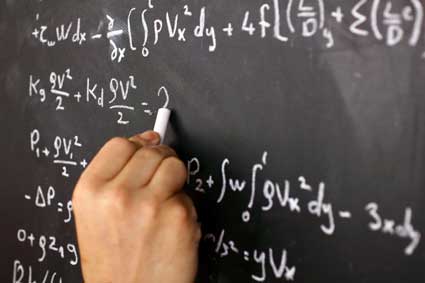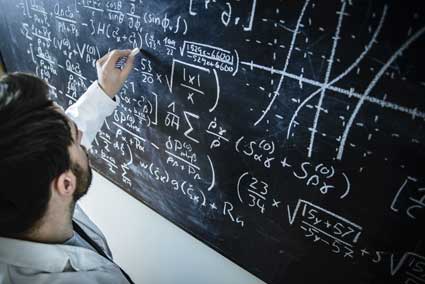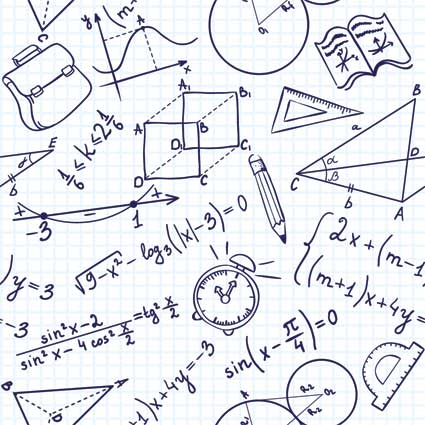A. Thermodynamics: Definition
The word thermodynamics comes from the Greek word thermos which means heat and dynamis which means power. Instead of being grouped within the chemistry family, thermodynamics is part of the physics family.
Essentially, thermodynamics is a science which studies the changes in temperature, pressure, and volume on physical systems on the macroscopic scale by analyzing the collective motion of their particles through observation and statistics.
B. Thermodynamics and Heat: History
Before the 19th century, there was a common assumption that the degree to which an object felt hot or cold was based upon the amount of heat it contained.
At this time, heat was envisioned as a liquid that flowed from a hot object to a cold object. During this time, the weightless fluid was termed "caloric". This remained the case until Joseph Black (1728-1799) produced findings that there was a connection between the quantity (caloric) and the intensity (temperature) of heat as opposed to there being no difference between heat and temperature.
C. Thermodynamics: The Laws
The Zeroth Law of Thermodynamics. The thermodynamic equilibrium is an equivalence relation.
The Zeroth Law is explained in this manner: If two thermodynamic systems are in thermal equilibrium with a third, they are also in thermal equilibrium with each other.
Joule's aforementioned experimentation, whereby he confirmed the notion that heat was indeed a form of energy, was the premise behind the First Law of Thermodynamics (also known as the Law of Conversation of Energy)
First Law of Thermodynamics (Conservation of Energy).
When heat is transformed into any other form of energy, or when other forms of energy are transformed into heat, the total amount of energy (heat plus other forms) in the system is constant.
Second Law of Thermodynamics (Entropy).
The total entropy (measurement of internal energy) of any isolated thermodynamic system tends to increase over time, approaching a maximum value.
The Third Law of Thermodynamics focuses on a temperature of absolute zero.
Third Law of Thermodynamics (Absolute Zero Temperature).
As a system asymptotically approaches absolute zero of temperature, all processes virtually cease and the entropy of the system asymptotically approaches a minimum value.
D. Thermodynamics: Scale of Temperature
In sync with the Third Law of Thermodynamics, in addition to, being composed of all the core tenets of thermodynamics, the Thermodynamic Scale of Temperature (also known as the absolute or Kelvin scale) is considered to be the absolute measure of temperature.
It is an absolute scale not just because it is used to measure temperature or heat, but also that it measures the fundamental property underlying temperature, that of the null or zero point on the thermodynamic temperature scale.
By definition, absolute zero is the lowest possible temperature where nothing can be colder and no more heat energy can be extracted from a substance.
E. Thermodynamics: Systems
An important concept in thermodynamics is the system. A system is the region of the universe which is considered to be undergoing study.
In thermodynamics, there are five main classes of systems:
1. Isolated Systems. Where matter and energy do not cross the boundary.
2. Adiabatic Systems. Where heat does not cross the boundary.
3. Diathermic Systems. Where heat may cross the boundary.
4. Closed Systems. Where matter does not cross the boundary.
5. Open Systems. Where heat, work, and matter may cross the boundary.
In isolated systems, overall internal differences in the system eventually even out; pressures, temperatures, and density differences tend to balance out. When a system possesses areas which are nearly all equal, it is considered to be in a state of thermodynamic equilibrium. In thermodynamic equilibrium, by definition, a system's properties do not change over time. Basically, systems in equilibrium are much simpler and easier to understand than systems which are not in equilibrium. Most times, when analyzing a thermodynamic process, it can be assumed that each intermediary state is at equilibrium. This also helps to simplify the measurement of the process.
F. Thermodynamics: Parameters
The central concept of thermodynamics revolves around the idea of energy, hence, the ability to do work. As explained by the first law, the energy level of the entire system, as well as its surroundings, are conserved. The energy may be transferred to a body through such means as: heating, compression, or by the addition of more matter. It may be extracted by: cooling, expansion, or the extraction of matter.
To provide a means for comparison, in mechanics, energy transfers result from forces that cause displacement. Thereby, the product of the two equals the total amount of energy that is being transferred. In a similar sense, thermodynamic systems entail transferring energy that is produced by a generalized force which causes a generalized displacement. Thus, the product of the two equals the total amount of energy that is being transferred.
G. Thermodynamics: States
Under a specified set of conditions, when a system is at equilibrium, it is said to exist in a definite state. The state of the system can be described by both intensive and extensive variables. In turn, the properties of the system can be described by an equation of state that specifies the nature of the relationship that exists between the variables.
H. Thermodynamics: Processes
The definition for a thermodynamic process is the energy-infused transformation of a thermodynamic system whereby it moves from an introductory state to a final one.
Note: It has been found useful to group these processes into pairs, in which each variable held constant is one member of a conjugate pair.
The six most common thermodynamic processes are as follows:
1. An isobaric process. Takes place at a constant pressure.
4. An isentropic process. Takes place at a constant entropy (amount of environmental disorder).
5. An isenthalpic process. Takes place at a constant enthalpy (amount of internal heat).
6. An adiabatic process. Takes place with a constant loss or gain of heat.



























